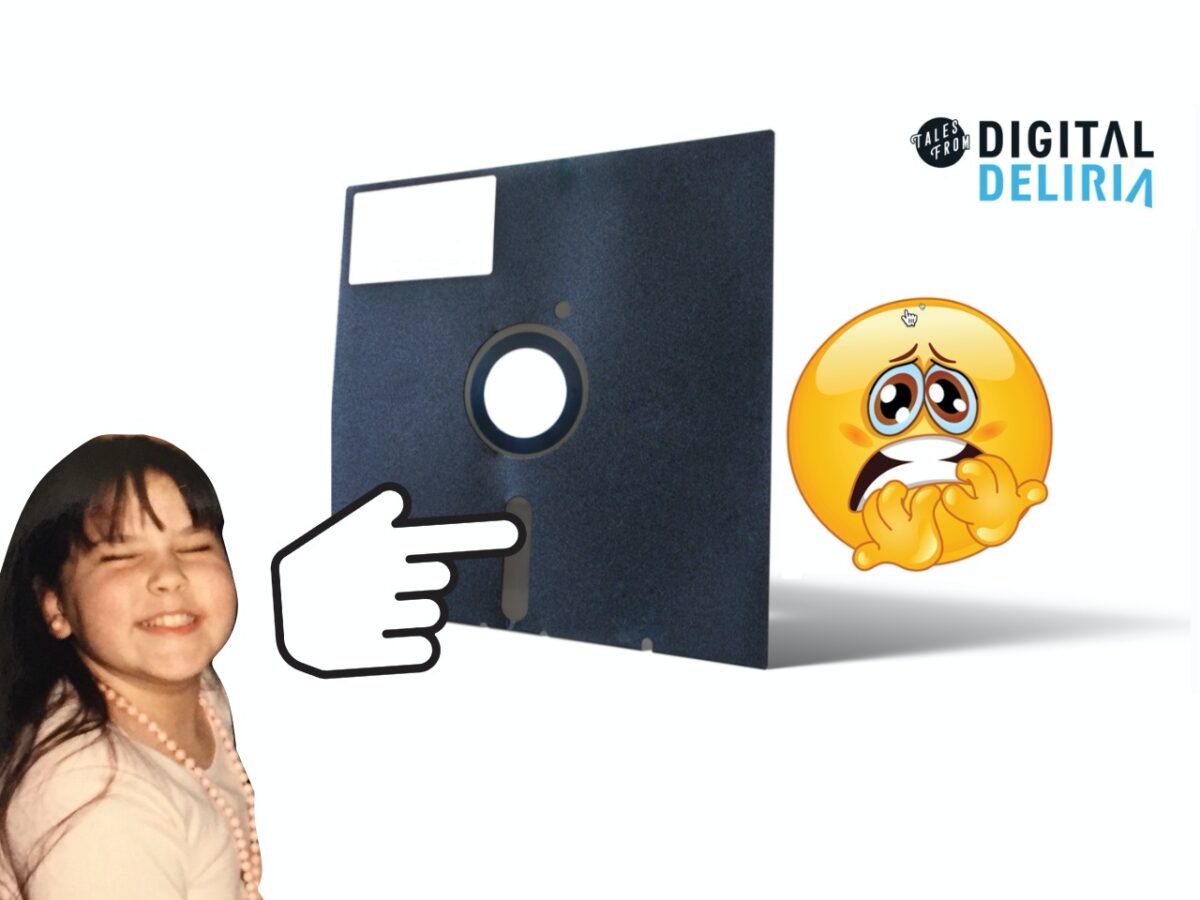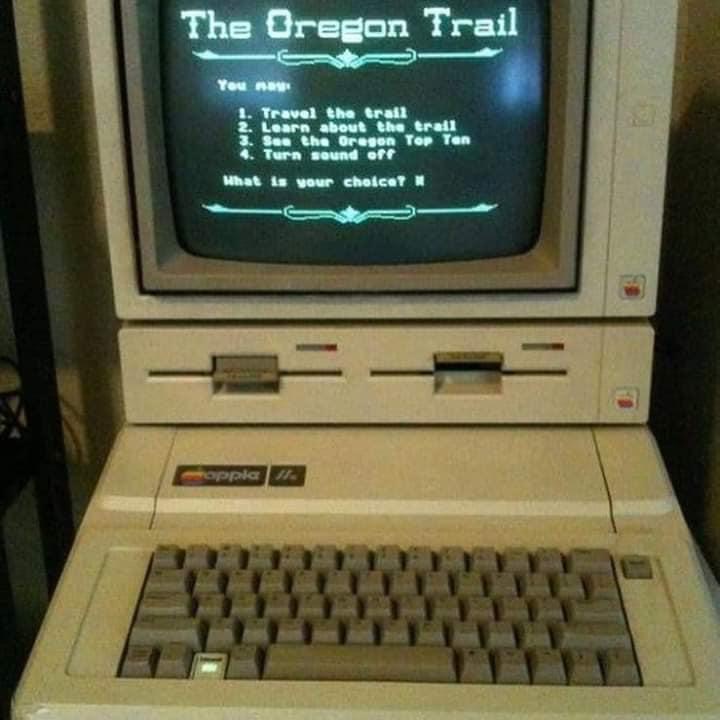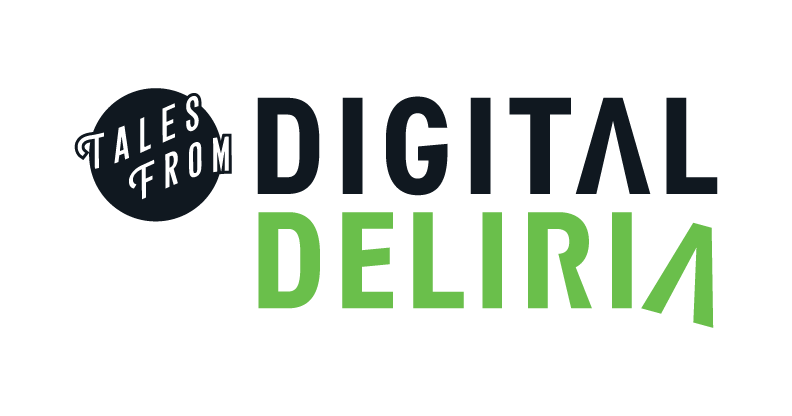Coding the Universe – and Other Lofty Goals

Getting out of our normal classroom and into the hallway normally meant “tornado drill”. Heads crouched to the dust-bunnied wall, hands clasped overhead.
But this was no such day in the Midwest. Today, we were buzzing, anticipating our first day in the coveted computer lab. Access would be limited to once a week, given the entire elementary school shared this one room of computers. So we were eager for our chance!
Soon we filed from the hall into the cold room, to behold rows and rows of Apple 2e’s: black screens, green type, encased in greyish-tan bodies. In bins near the door, I saw soft-covered orange workbooks with big words: “Computer Literacy”.

First reaction?… looks oddly sterile and boring to me. Yet inexplicably, many of my fellow classmates were very intrigued by this public-school system’s offering. Well, it beat the hollering of our normal teacher in her classroom, anyway.
We sat 2 kids to a terminal, and got our first lesson about floppy disks. (These sacred things that were kept on high shelves out of the reach of grubby hands.)
Right away, I was anxious. Perhaps it was the sheer number of times we were warned not to touch that part of the 8-inch floppy that was the dark black disk. It stared at us with an inky eye, as if willing us to poke it. This eye was the maker or beaker of computing success. Children: Don’t ruin the disks, for the love of God! Over and over.
Soon we got our first project: write a program to tell the computer to print a picture.
The first step was to design a picture, using graph paper to map out the position of dots. With this, we could program the positions so that the computer would know what to print where.
With my paper in hand, I began to see what others were designing. Many, many smiley faces. A cloud here and there, perhaps. But what was I going to create?
I WAS GOING TO CREATE THE UNIVERSE!
So off I went, dotting-in stars and nebula and a central galaxy that was sure to impress. I loved astronomy, after all. So this would go up on my cork board next to my “earthrise” poster, for sure.
All these dots took a lot of time. Other kids had started to type their programs into the computer already.
By the time I started typing my program, their first pictures were rolling off the printer.
Sure enough, there was the smiley face… but with an oblong head and lopsided grin like your drunk Uncle who just came home from the local tavern. Clearly you could see what was wrong.
Assured that I would do better, I started typing. At this point the printer was rolling off picture after picture. Seeing this, I started to sweat and my typing became feverish to catch up. Type, type, save to the floppy… now most of the class is finished… I’m still typing and typing… Line – Print – Coordinates, Line – Print – Coordinates… endlessly. Nervously. Kids start leaving the room, their projects all done. Black screen now full of glowing green lines. Anxiety fully taking over. It was like writing lines on the chalkboard with acute embarrassment. And soon I was left alone, with the teacher… waiting on me.
To be sure, this was an advanced project for this second grader who had no desire or aptitude for computers at all.
325 lines of code later… I was ready to print my universe.
I hovered over the printer with the teacher, in eager anticipation of the output. Finally, the paper spat out, we turned it over, and …
Well… I had stars, but none were in the right places.
What was to be a glowing galaxy with impressive arms spiraling outward and a concentration of stars at its center, looked like a simple smattering of dots across the white page.
After a semi-baffled moment, the teacher asked: “Is that what you meant it to look like?”
I paused. Hmmm. Well, it did have stars. It did still look like a universe. So I said, “Uh… yeah?”
“Good!,” the teacher said with relief, finally free to release me from her classroom and get on with her lunch, for goodness sake.
In smarty-pants hindsight today, maybe I could say only God could put the stars in their rightful places on that horrible Apple 2e, and in the sky itself!
But my clear lesson learned was: I could design things, but I just could not make technology execute it for me.
So how on God’s green earth (erm… universe) did I get to where I am today, working in technology and living the digital life after a first tech experience like that? It was a highly unlikely start.
Sheer determination, it seems. The moral of the story?: Don’t be afraid to take on the BHAG (Big Hairy Audacious Goal). And even when you get into a project without knowing in advance that you actually picked a BHAG, and it turns out to be way over your head — don’t give up! Keep going at it, even though you’re stressed to the hilt and on the razor’s edge of failure. Keep working. You might end up with something totally unique… never done before or since! And others will be hard pressed to find fault in that.
Or at least, they’ll think the result was what you intended!
We want to hear from you — what were your first experiences with technology? Please post your comments below.
As always, I hope you enjoyed this and it brightened your day.
Please share if it did, to help brighten someone else’s!
Don’t want to miss a future story? Be sure to sign up for our mailing list.
7 Replies to “Coding the Universe – and Other Lofty Goals”
Comments are closed.

Ahh the good old Quin days! I believe the teacher was Mrs. Nielsen and yes I remember the green screen and the “don’t put a paper clip near the center of the disk” warning!
Good stuff! Congrats on your project
Thank you and yes!! Paper clips, fingers, and any other substances were “no-no’s” with those sensitive, old disks! 🙂
Great story about our days at Quinn! I was quickly transformed back to that same computer lab.
Thank you, that’s what I was aiming to achieve! 🙂
And speaking of teachers . . . when computers came to our building (not until mid 1990’s) we were entreated to computer experts (not educators) to “teach us the basic ropes” of the marvel of this “new” technology. Our primary library had ten (count them!), ten mix-matched computers (used and donated to a poorer district–Macs and Apples) spread around the space. So, I’d take my 38-46 (depending on the year) first-graders into the library for our 40 minutes of computer time; divide them up into three groups and begin. Group #1–journal time, group #2–time to read, and group #3–to the computers. Find the letters to type your name . . . times up basically, and we would sometimes find the letters to our spelling words. Just an editorial comment from “a teacher”. Love your choice of fonts.
That’s quite a story of the “realities” of teaching technologies. Interesting (and unfortunate) that not much has changed over the years, in terms of disparities in access to technology in schools! 🙁
Did I forget to mention that all three groups would have their 9 minutes of special time?